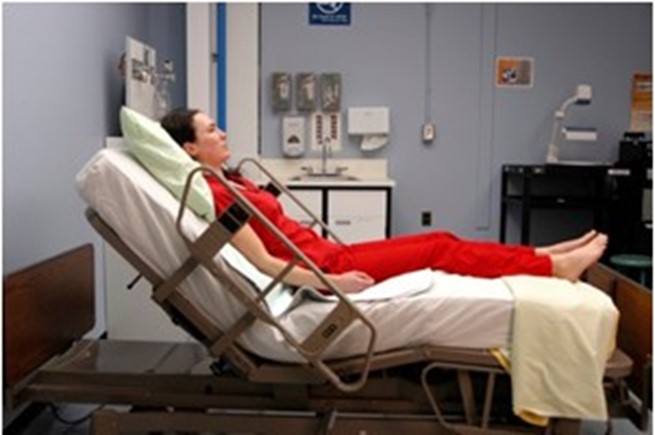A pregnant woman is experiencing nausea in the early morning.
What recommendations would the nurse offer to alleviate this symptom?
Eat three well-balanced meals per day and limit snacks.
Have crackers handy at the bedside and eat a few before getting out of bed.
Drink a full glass of fluid at the beginning of each meal.
Eat a bland diet and avoid concentrated sweets.
The Correct Answer is B
A nurse would recommend having crackers handy at the bedside and eating a few before getting out of bed to alleviate nausea in the early morning for a pregnant woman 1.
Eating foods that don’t aggravate your stomach, such as crackers, can help limit morning sickness.
Choice A is not an answer because eating three well-balanced meals per day and limiting snacks may not help alleviate nausea.
Eating small meals can help limit morning sickness.
Choice C is not an answer because drinking a full glass of fluid at the beginning of each meal may not help alleviate nausea.
Drinking throughout the day, not just when you are thirsty, can help limit morning sickness.
Choice D is not an answer because eating a bland diet and avoiding concentrated sweets may not help alleviate nausea.
Eating foods that don’t aggravate your stomach can help limit morning sickness.
Nursing Test Bank
Naxlex Comprehensive Predictor Exams
Related Questions
Correct Answer is A
Explanation
Anorexia nervosa is an eating disorder characterized by abnormally low body weight, an intense fear of gaining weight, and a distorted perception of weight.
People with anorexia place a high value on controlling their weight and shape, using extreme efforts that tend to significantly interfere with their lives.
Choice B, Lack of motivation, don’t like to do things perfectly, is not correct because it is not a characteristic of anorexia.
Choice C, Would rather watch TV all day than exercise, is not correct because it is not a characteristic of anorexia.
Choice D Only affects females is not correct because anorexia can affect both males and females.
Correct Answer is D
Explanation
This can help prevent stomach acid from moving up into the esophagus and causing heartburn at night.

Choice A is not correct because exercise is generally safe during pregnancy and can have many benefits.
Choice B is not correct because sodium bicarbonate may not be safe for pregnant women to take.
Choice C is not correct because heartburn during pregnancy is common and usually does not require emergency medical care.
Whether you are a student looking to ace your exams or a practicing nurse seeking to enhance your expertise , our nursing education contents will empower you with the confidence and competence to make a difference in the lives of patients and become a respected leader in the healthcare field.
Visit Naxlex, invest in your future and unlock endless possibilities with our unparalleled nursing education contents today
Report Wrong Answer on the Current Question
Do you disagree with the answer? If yes, what is your expected answer? Explain.
Kindly be descriptive with the issue you are facing.
